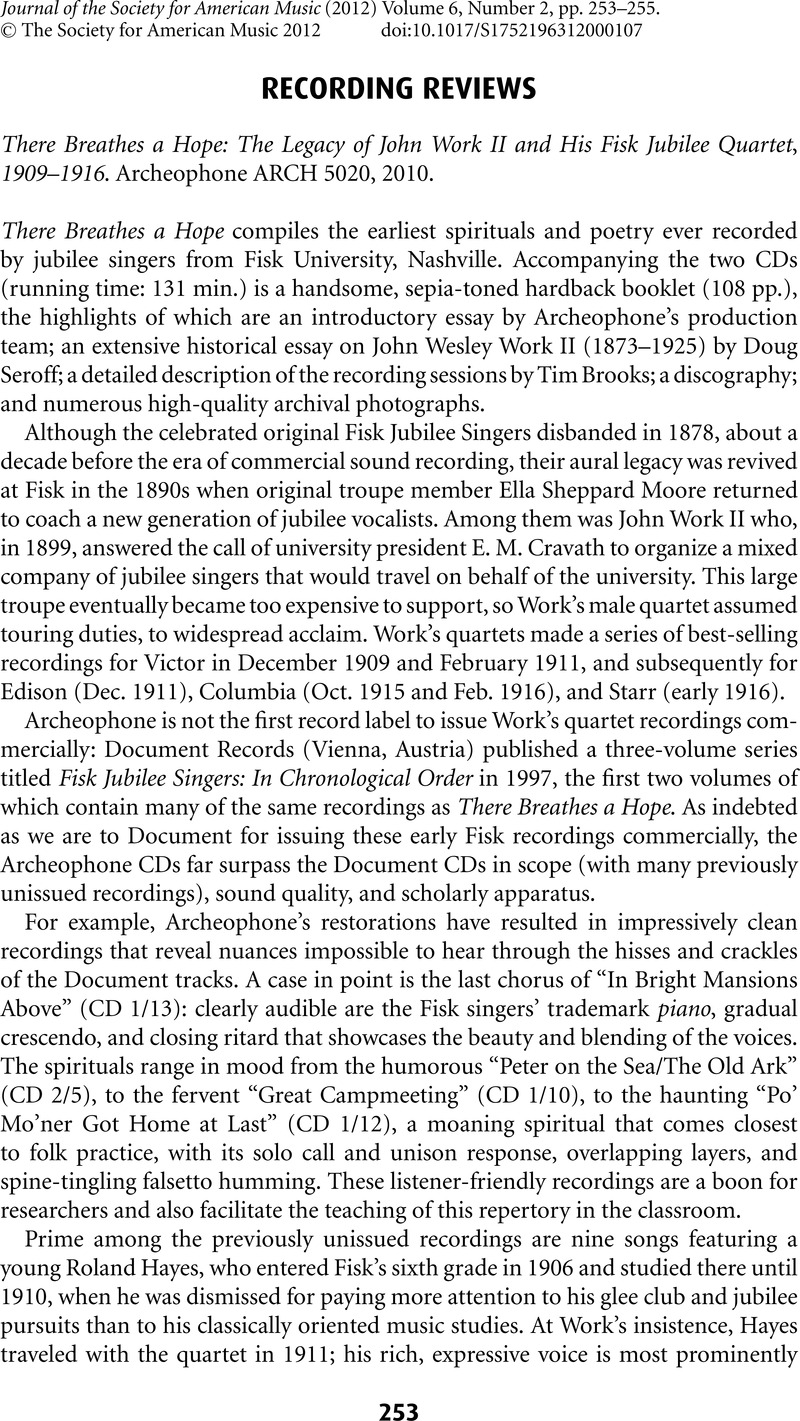No CrossRef data available.
Article contents
There Breathes a Hope: The Legacy of John Work II and His Fisk Jubilee Quartet, 1909–1916. Archeophone ARCH 5020, 2010.
Published online by Cambridge University Press: 09 May 2012
Abstract

Information
- Type
- Recording Reviews
- Information
- Copyright
- Copyright © The Society for American Music 2012
References
1 Brooks, Tim, “The Fisk Jubilee Singers and the Popularization of Negro Spirituals,” in Lost Sounds: Blacks and the Birth of the Recording Industry, 1890–1919 (Urbana: University of Illinois Press, 2004), 192–214Google Scholar.
2 My thanks to Richard Martin of Archeophone for sharing with me the research process into recording speeds, the details of which are beyond the scope of this review.
3 For example, Brooks perpetuates the notion that in early student entertainments from 1867 the students sang “art” repertoire, whereas they actually sang popular songs. White's initial touring group comprised ten students (six women, four men), not nine (although one woman left the troupe after two months). Brooks describes the spirituals as “semi-religious” and uses W.E.B. Du Bois's term “sorrow songs” to refer to them; these terms detract from the rich complexity of this body of song.

